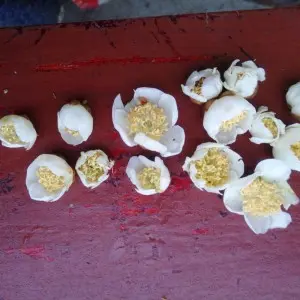Dec . 30, 2024 18:31 Back to list
active pollen for pollination in apple orchards product
Active Pollen for Pollination in Apple Orchards
Pollination is a critical process in the cultivation of many fruit crops, particularly apples. The success of apple orchards heavily relies on the effective transfer of pollen from male to female flowers. This transfer is primarily facilitated by various pollinators, including bees, which play an indispensable role in the reproduction of apple trees. Understanding the concept of active pollen, its definition, and significance can contribute greatly to the productivity of apple orchards.
What is Active Pollen?
Active pollen refers to the viable pollen grains that are deposited on the stigma of flowers and are capable of fertilizing the ovules. In the context of apple orchards, active pollen is essential for successful pollination and subsequent fruit development. Each apple variety has its unique bloom time, which necessitates careful management of pollen sources to ensure that the right type of pollen is available when the flowers are receptive.
Typically, apple trees are not self-pollinating; they require pollen from another variety for optimal fruit set. Each variety of apple has a specific range of compatible pollinators, which can significantly impact yields. Therefore, orchard management must account for both the presence of suitable pollinator varieties and the timings of their blooms to maximize the amount of active pollen available during the flowering season.
The Role of Bees in Pollination
Bees, particularly honeybees, are the most effective pollinators in apple orchards. They not only collect nectar for their hives but also transfer pollen as they move from flower to flower. The presence of bees significantly increases the likelihood of cross-pollination, which is essential for optimal apple production. Studies have shown that orchards with higher populations of bees tend to have better fruit quality and increased yields.
Utilizing managed bee populations, such as placing beehives in or near apple orchards during bloom time, can greatly enhance the levels of active pollen transfer. Beekeepers often coordinate with apple growers to ensure that their hives are in place during the critical flowering period, which may last just two to three weeks depending on the region and weather conditions.
Pollen Competition and Quality
While apple pollination heavily relies on bee activity, not all pollen is created equal. The quality and viability of the pollen grains are paramount for successful fertilization. Factors such as environmental conditions, tree health, and specific cultivar traits all influence pollen viability. If environmental stressors, such as drought or disease, affect the flowers or pollen grains, the effectiveness of pollination can be compromised.
active pollen for pollination in apple orchards product

Moreover, there is a phenomenon known as pollen competition, where the genetic makeup of the pollen can affect fertilization outcomes. The most competitive pollen grains will fertilize the ovules first, leading to the formation of seeds that influence the resultant fruit's genetics. Hence, the selection of appropriate pollen sources and ensuring a mix of compatible varieties can enhance the effective transfer of active pollen in approaching additional harvest yields.
Best Practices for Managing Active Pollen in Orchards
To maximize the impact of active pollen on apple production, orchardists can employ several strategies
1. Diversity of Varieties Plant multiple apple varieties with overlapping bloom times to ensure that compatible pollen is available when needed.
2. Bee Management Introduce managed honeybee colonies to support pollination. Alternatively, encourage native bee populations by maintaining wildflower strips and minimizing pesticide use.
3. Monitoring Conditions Regularly assess the health of apple trees and environmental conditions. Implement irrigation and disease management to maintain tree vigor during flowering.
4. Timing Keep track of the blooming period of different apple varieties and manage orchard tasks accordingly, such as pruning and fertilization, to optimize flowering performance.
5. Educate and Collaborate Work together with local beekeepers to ensure effective pollination. Educate oneself about the interaction between pollinators and apple varieties for improved orchard management.
Conclusion
Understanding active pollen's significance in apple orchards is integral to achieving successful pollination and optimal yield. Through effective management of bee populations, careful selection of flowering varieties, and maintaining a healthy orchard ecosystem, growers can enhance the transfer of active pollen, leading to fruitful harvests of apples for years to come.
-
Premium Cherry Pollen for Pure Pollination & Different Types
NewsJul.30,2025
-
Artificial Pollination Solutions for Various Plant Pollen Types
NewsJul.29,2025
-
Artificial Pollination Solutions for All Plant Pollen Types
NewsJul.29,2025
-
Premium Plant Pollen for Pure Pollination & Pollen Block Solutions
NewsJul.29,2025
-
Artificial Pollination Solutions for Efficient Crop Yields
NewsJul.28,2025
-
Premium Cherry Pollen for Pure Pollination & Different Types of Pollen
NewsJul.28,2025